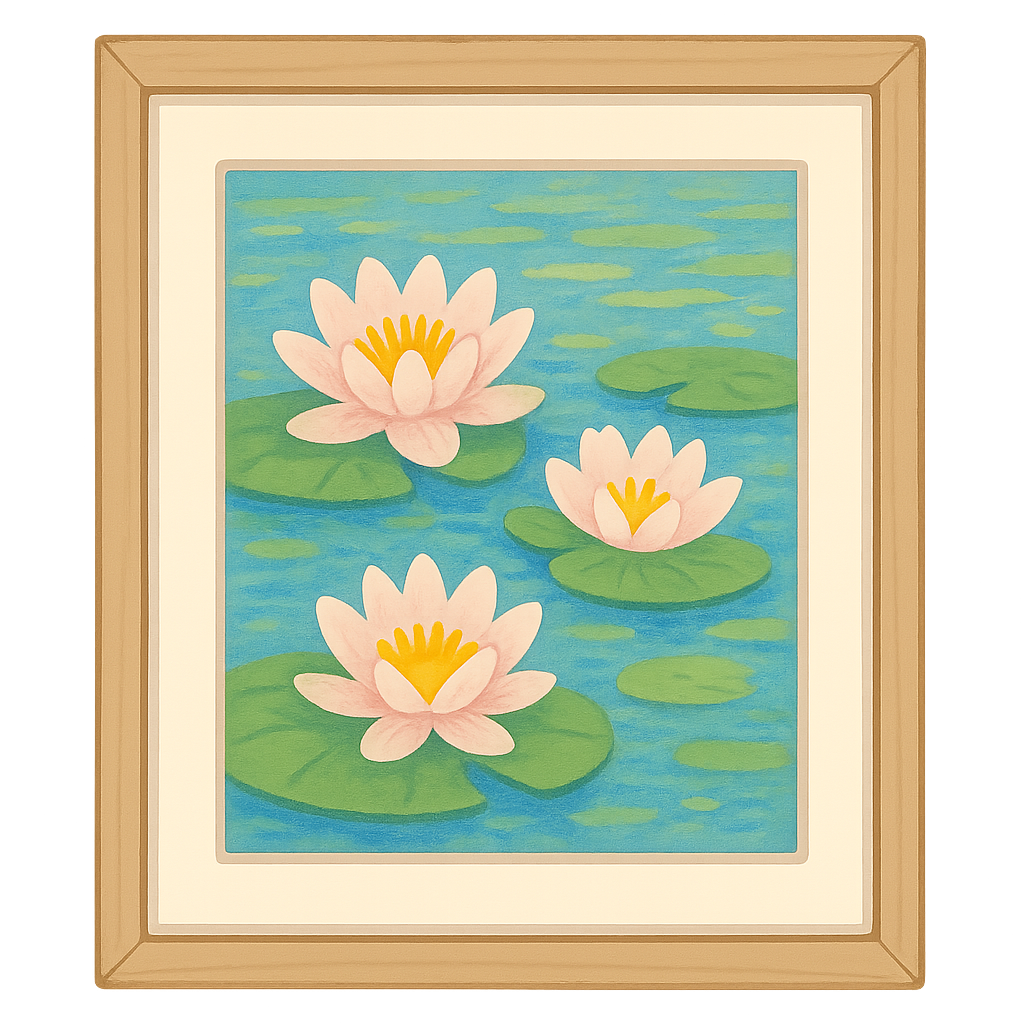I Am the Water Lilies
Have you ever looked into a pond and seen the whole world reflected back at you? That’s what I am. I am a swirl of cool blues and soft pinks, a shimmer of deep greens and sunny yellows. I am not just one thing, but many things at once. Sometimes I am calm and quiet, a perfect mirror for the sky above. Other times, I am a dance of light and shadow, a ripple on a watery surface. I am the feeling of peace you get when you dip your toes in cool water on a hot summer day. Before I was a famous painting, I was the dream of a beautiful garden. I am the Water Lilies.
My creator was a kind man with a long, white beard named Claude Monet. He loved me so much that he painted me over and over again for nearly 30 years, from about 1896 until he passed away in 1926. He didn't find me in a wild lake; he built a special world just for me in his garden in a little French village called Giverny. He had a pond dug right in his backyard and filled it with the most beautiful water lilies he could find. Then, he built a green Japanese-style bridge over it and planted weeping willows and colorful flowers all around the edges. This garden was his happy place. He would sit by the water for hours, just watching. Can you imagine spending your whole day watching light dance on water? He wasn't trying to paint a perfect, photographic picture of a flower or a leaf. He wanted to paint the light, the air, and the reflections. He used quick, bright brushstrokes to capture the way the sun sparkled on the water and how the clouds drifted across my surface. As he got older, his eyesight grew blurry, but that only made his paintings of me more magical and dreamlike, full of hazy color and feeling.
Monet didn't just want people to look at me; he wanted them to feel like they were stepping right into his pond. He had a grand idea. He painted some of us on giant canvases, so big they could wrap around an entire room. After a very sad and difficult time in history, the First World War, he gave these huge paintings to his country, France, as a gift of peace and beauty in 1922. A special museum was prepared just for us in Paris, called the Musée de l'Orangerie. We were hung in two big, oval rooms with soft light coming from the ceiling, just as Monet had always wanted. When you stand in the middle of those rooms, it feels like you are floating in the water with me, surrounded by shimmering light and color. People come from all over the world to sit on the benches, look at us, and feel calm and thoughtful. It is a quiet place for reflection, just like my pond.
Even though I am just made of paint on a canvas, I am also a memory of a beautiful garden and the feeling of a peaceful moment. I show people that you can find incredible beauty everywhere, even in the simple ripples of a small pond. I remind them to slow down and notice the little things, like how the light changes from the morning to the evening. Artists today still look at me and get inspired to see the world in new ways, not just for what things look like, but for how they feel. I am a window into a quiet, beautiful world, a pond of dreams that you can visit anytime you want. I connect you to a painter's love for his garden from over a hundred years ago, and I will be here to share that peace for hundreds of years more.
Reading Comprehension Questions
Click to see answer
